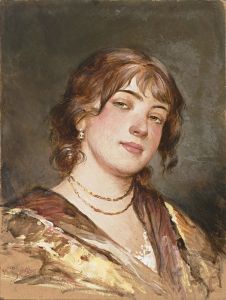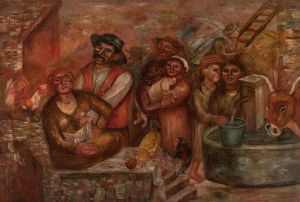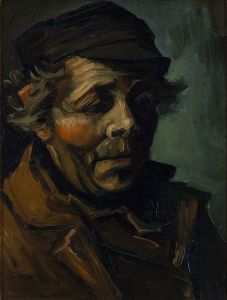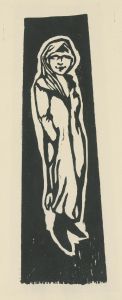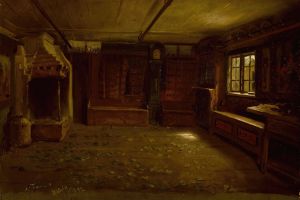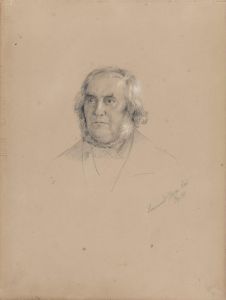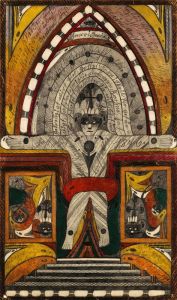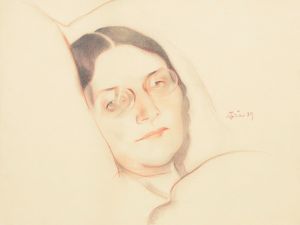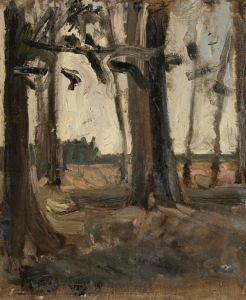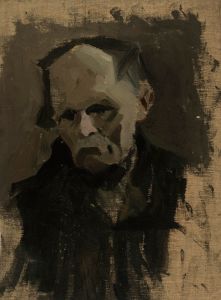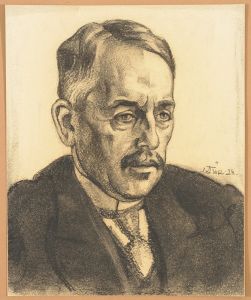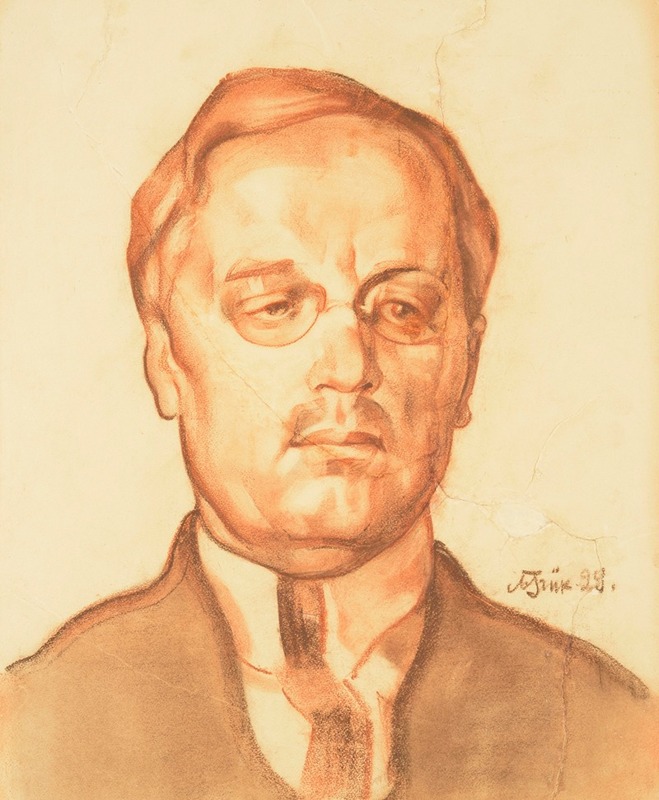
Mait Metsanurga portree
A hand-painted replica of Nikolai Triik’s masterpiece Mait Metsanurga portree, meticulously crafted by professional artists to capture the true essence of the original. Each piece is created with museum-quality canvas and rare mineral pigments, carefully painted by experienced artists with delicate brushstrokes and rich, layered colors to perfectly recreate the texture of the original artwork. Unlike machine-printed reproductions, this hand-painted version brings the painting to life, infused with the artist’s emotions and skill in every stroke. Whether for personal collection or home decoration, it instantly elevates the artistic atmosphere of any space.
Nikolai Triik was an influential Estonian artist known for his contributions to modernist painting in the early 20th century. One of his notable works is the portrait titled "Mait Metsanurga portree," which translates to "Portrait of Mait Metsanurk." This painting is a significant piece within Triik's oeuvre, reflecting both his artistic style and the cultural context of the time.
Nikolai Triik was born on August 7, 1884, in Tallinn, Estonia. He studied art in St. Petersburg, Russia, and later in Paris, France, where he was influenced by various modernist movements, including Impressionism and Symbolism. Triik's exposure to these styles is evident in his work, which often features bold colors, expressive brushwork, and a focus on capturing the essence of his subjects.
The subject of the portrait, Mait Metsanurk, was a prominent Estonian writer, whose real name was Eduard Hubel. Born on November 19, 1879, Metsanurk was known for his novels and plays that often explored social issues and the lives of ordinary people in Estonia. His works contributed significantly to Estonian literature, and he was an important cultural figure during the early 20th century.
"Portrait of Mait Metsanurk" is a testament to the close-knit community of Estonian intellectuals and artists during this period. Triik's portrayal of Metsanurk is not just a depiction of the writer's physical appearance but also an exploration of his character and intellectual presence. The painting captures Metsanurk with a thoughtful expression, suggesting his introspective nature and the depth of his literary work.
Triik's style in this portrait is characterized by a combination of realism and modernist elements. The use of color and light in the painting highlights the subject's facial features and expression, while the background remains relatively simple, drawing attention to Metsanurk himself. This approach is typical of Triik's portraits, where the focus is on the psychological depth and individuality of the sitter.
The painting is also significant in the context of Estonian national identity. During the early 20th century, Estonia was undergoing a cultural renaissance, with artists and writers playing a crucial role in the development of a distinct national culture. Triik's work, including this portrait, contributed to this movement by celebrating Estonian figures and exploring themes relevant to the nation's identity.
"Portrait of Mait Metsanurk" is housed in the Art Museum of Estonia, where it remains an important piece of the country's artistic heritage. The painting not only showcases Triik's skill as a portraitist but also serves as a historical document, capturing the spirit of an era when Estonian culture was flourishing.
In summary, Nikolai Triik's "Portrait of Mait Metsanurk" is a significant work that reflects the artist's modernist influences and his connection to the Estonian cultural milieu. Through this portrait, Triik not only immortalizes a key literary figure but also contributes to the broader narrative of Estonian national identity and artistic achievement.





